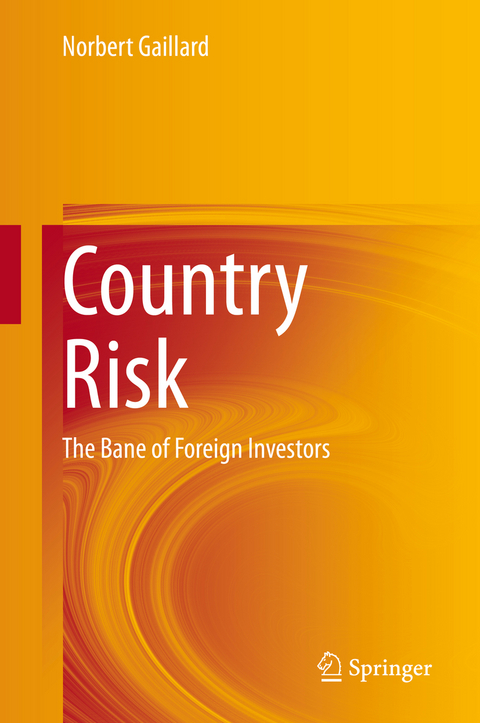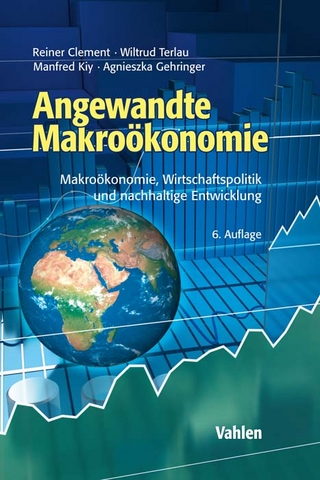
Country Risk
Springer International Publishing (Verlag)
978-3-030-45787-7 (ISBN)
Chapter 1 introduces the key concepts. Chapter 2 investigates how country risk has evolved and manifested since the advent of the Pax Britannica in 1816. It describes the international political and economic environment and identifies the main obstacles to foreign investment. Chapter 3 documents the numerous forms that country risk may take and provides illustrations of them. Seven broad components of country risk are scrutinized in turn: international political risks; domestic political and institutional risks; jurisdiction risks; macroeconomic risks; microeconomic risks; sanitary, health, industrial, and environmental risks; and natural and climate risks. Chapter 4 focuses on sovereign risk. It presents the rating methodologies used by four raters; next, it measures and compares their performance (i.e., their ability to forecast sovereign defaults). Chapter 5 studies the risks likely to affect exporters, importers, foreign creditors of corporate entities, foreign shareholders, and foreign direct investors. It presents the rating methodologies used by seven raters and measures their track records in terms of anticipating eight types of shocks that reflect the main components of country risk analyzed in Chapter 3.
This book will be most relevant to graduate students in economics as well as professional economists and international investors.
Norbert Gaillard is a French economist and independent consultant (norbertgaillard.com). He is a Euromoney Country Risk expert and his areas of expertise are public debt and sovereign risk, local government debt and subnational risk, country risk, and credit rating agencies. He has written more than twenty research papers and book chapters on credit risk. Among these, the most important are "The End of Gatekeeping: Underwriters and the Quality of Sovereign Bond Markets, 1815-2007" (in NBER International Seminar on Macroeconomics 2009, University of Chicago Press, 2010), "What Is the Value of Sovereign Ratings?" (German Economic Review, 2014), "Efficient, Commonsense Actions to Foster Accurate Credit Ratings" (Capital Markets Law Journal, 2016), "The Icarus Syndrome: How Credit Rating Agencies Lost Their Quasi Immunity" (Southern Methodist University Law Review, 2018). He has published four books: Les Agences de Notation (La Découverte, Paris, 2010), A Century of Sovereign Ratings (Springer, New York, 2011; also translated into Chinese), When Sovereigns Go Bankrupt (Springer, Cham, 2014), and The Failure of Financial Regulation (Palgrave Macmillan, Cham, 2019).
Chapter 1. Introduction.- Chapter 2. Two Centuries of Country Risk, 1816-2016.- Chapter 3. Taxonomy of Country Risk.- Chapter 4. Sovereign Risk Indicators.- Chapter 5. Country Risk Indicators.- Chapter 6. Concluding Remarks.
| Erscheinungsdatum | 09.07.2020 |
|---|---|
| Zusatzinfo | XIV, 259 p. 17 illus. |
| Verlagsort | Cham |
| Sprache | englisch |
| Maße | 155 x 235 mm |
| Gewicht | 582 g |
| Themenwelt | Sozialwissenschaften ► Soziologie |
| Wirtschaft ► Betriebswirtschaft / Management | |
| Wirtschaft ► Volkswirtschaftslehre ► Makroökonomie | |
| Wirtschaft ► Volkswirtschaftslehre ► Mikroökonomie | |
| Schlagworte | Country risk • Foreign Direct Investment • International finance • International Trade • Macroeconomics • Microeconomics • Sovereign Risk |
| ISBN-10 | 3-030-45787-7 / 3030457877 |
| ISBN-13 | 978-3-030-45787-7 / 9783030457877 |
| Zustand | Neuware |
| Haben Sie eine Frage zum Produkt? |
aus dem Bereich


